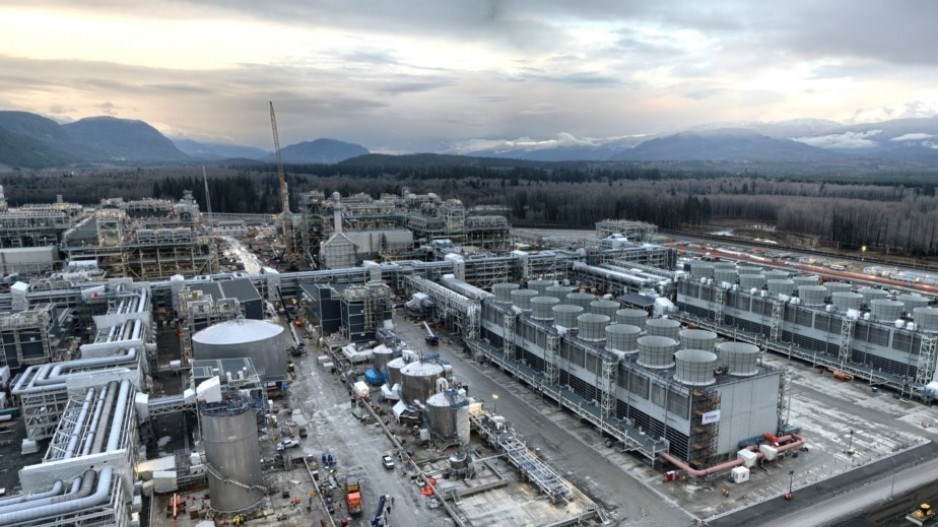The International Energy Agency (IEA) is handing the B.C. Green Party ammunition in its arsenal of arguments against natural gas and LNG in B.C.
In recent debates, Green Party Leader Sonia Furstenau has pointed to previous IEA projections that new LNG projects, like the Ksi Lisims project, may not needed and could end up stranded assets.
“Under the NDP, we've gone from zero LNG facilities to a potential of seven,” she said in a recent leaders debate. “We have a government that is all in on a fuel that is now proven to be worse than coal, that the International Energy Agency has said we'll leave B.C. behind because the demand will be gone.”
The IEA’s annual World Energy Outlook, released today, forecasts that, after accounting for the new LNG supplies coming online soon, which would include the LNG Canada project in Kitimat, there may be no need for major new LNG projects, in the near term, although that forecast is posited on countries living up to their climate action policies, such as net-zero by 2050 targets.
In 2021, the IEA's outlook warned that no new major oil and gas field or large-scale LNG developments not already in the queue would be needed, as demand for oil and natural gas was expected to peak by the end of the decade.
Then an energy crisis in Europe, exacerbated by Russia’s war in Ukraine, spiked natural gas demand and LNG prices, upsetting global energy trade and casting some doubts on the IEA's forecasts. Some balance has now returned to global natural gas and LNG trade.
In its energy projections, the IEA uses different scenarios, including stated policy scenarios (STEPS). And providing nations live up to their various climate action commitments, under those scenarios the demand for natural gas globally is expected to peak towards the end of this decade.
“While global natural gas demand increases by about 250 (billion cubic metres) from 2023 to a peak of 4,400 bcm in the late-2020s in the STEPS, global gas markets remain well supplied,” the IEA states.
“A wave of new LNG supply coming to market, together with other factors, applies downward pressure on the price of LNG exports in the STEPS. The response to these price reductions is uncertain and could lead to global natural gas demand increasing faster than projected in the STEPS in order to clear available supply.”
Countries like Japan, South Korea and China that need to import natural gas from large natural gas producing regions, such as the U.S., Australia and Qatar, must import it in liquefied form – LNG.
And all of the LNG plants in operation or under construction will be sufficient to supply these countries for the next decade and a half, the IEA forecasts.
“Existing LNG export capacity and new capacity under construction is sufficient to meet projected demand in the STEPS until 2040,” the IEA’s outlook states. “This suggests that no further projects are required in the near term to satisfy demand for LNG.
“Compared with previous waves of LNG supply growth, there are now fewer buyers that are obliged to take volumes of gas on long-term take-or-pay contracts. Around one-third of the capacity under construction is as-yet uncontracted, meaning these additional volumes will be made available on the spot market from suppliers or portfolio players with equity stakes in the terminals.
“With the increasing liquidity and flexibility of global LNG supply, there is a high degree of uncertainty about which markets and sectors have the capacity to absorb these additional volumes of gas.”
The IEA notes that some former or would-be suppliers of natural gas and LNG, notably Russia, are facing challenges that may give new entrants like Canada and Argentina some advantage to supplant them to address longer term demand.
"Current projects in East Africa have been delayed by security concerns, while difficulties developing upstream resources have tempered export capacity growth in West Africa and Australia," the outlook notes.
"Russian LNG supply growth is meanwhile hobbled by sanctions, while possible projects in other countries with export ambitions, such as Saudi Arabia, are at a very early stage of development.
"On the other hand, Qatar and the United States, which dominate today’s pipeline of new projects, look well-placed to develop more capacity in the long term. Canada and Argentina are also in a strong position to ramp up gas exports now that they are completing planned infrastructure to transport gas from inland fields to coastal terminals."



